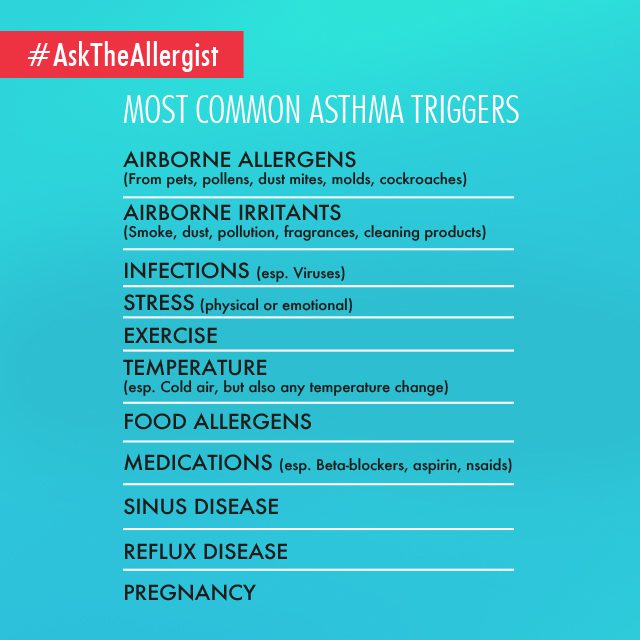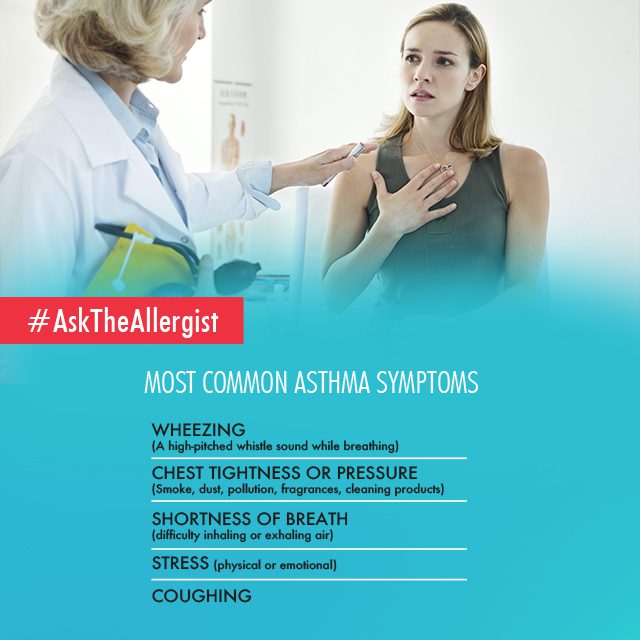The most important questions answered.
We asked Dr. Barry J. Mark, a Board-Certified Allergist/Immunologist at our Aventura, Fort Lauderdale, Hollywood, and Pembroke Pines offices, to share his insights on asthma.
What is asthma?
Dr. Mark: Asthma is a chronic disease of the lungs’ lower airways. These airways, or bronchial tubes, are designed to receive oxygen and exhale carbon dioxide. But with asthma, inflammation in the lining of the tubes obstructs this needed gas exchange. And if that wasn’t bad enough, asthma causes the tiny muscles around these tubes to tighten, and then excess mucus gets produced inside these airways to limit airflow even further.
What are the most common asthma triggers?
Dr. Mark: Asthma patients have their own unique triggers. Among the most common are:
How is asthma related to allergies?
Dr. Mark: Airborne allergens (above) are typically harmless substances. But with allergic asthma, these allergens enter the airways and trigger an overproduction of IgE antibodies. Other types of antibodies (non-IgE) help fight off infections, but these allergic IgE ones instead bind to airborne allergens and start a cascade in the airways. All sorts of chemical mediators are produced and released there, and that’s what causes the inflammation, airway tightening, and mucus production. Our job as allergists is to identify our patients’ relevant allergic triggers and treat both the asthma symptoms and the root causes of this IgE-led immune response.
What are the typical asthma symptoms?
Dr. Mark: Many conditions present with respiratory problems, but if a patient has more than one of these classic symptoms, plus notable triggers or other allergic diseases, then we have a higher concern for asthma. These classic symptoms include:
How is asthma diagnosed?
Dr. Mark: So, in addition to having the above symptoms and triggers, we look for evidence of obstruction on Pulmonary Function Tests (PFTs). We perform PFTs in all of our offices and it’s a very valuable tool for diagnosing asthma and tracking its progression. It takes less than one minute to complete, and three strong breaths give us data on how much air patients can exhale from their lungs and the speed or flow of that volume of air. We have additional non-invasive breathing tests to measure inflammation of the airways. And we perform allergy skin tests to identify potential asthma triggers.
If I’m diagnosed with asthma, what’s next?
Dr. Mark: Fortunately, we have many asthma treatments to choose from, and it’s not a one-size-fits-all approach. Patients with the mildest form of asthma often do well with just an albuterol inhaler to use as needed. Other patients may do better with a daily inhaler to control inflammation and airway muscle constriction, and we often can provide sample inhalers for patients to start and then re-assess their results a few weeks later. We use various oral tablets for some patients, but for more severe asthma, we may also consider newer biologic treatments to suppress the IgE cascade. And for over 100 years, allergists have seen great responses to allergy shots, which build our patients’ immunity to their allergen triggers and are individually tailored for each patient.







